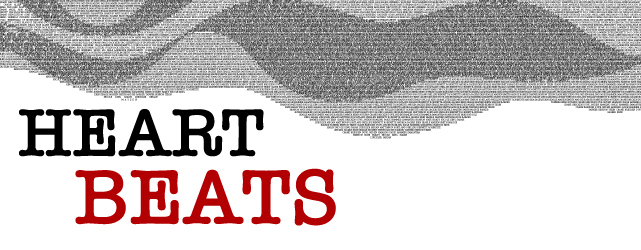
ENGL 4310 – Heart Beats Exhibit

Description
Bio
Diane di Prima was born in Brooklyn in 1934 and became one of the most important Beat editors and one of the few female Beat writers to gain prominence. She was intellectually precocious and rebellious from childhood on. After she dropped out of Swarthmore College in 1954 to become a poet, di Prima joined the art scene in Manhattan. Di Prima published her first book of poetry, This Kind of Bird Flies Backward, in 1958 and launched her career as a writer. In 1961, she began editing and publishing the monthly poetry journal Floating Bear with LeRoi Jones, which became an important platform for uninhibited expression that attracted Beat writers from across the country. In 1968, she moved to San Francisco where she still resides today. Di Prima learned to deal with being overlooked by the men of the movement. She was a dedicated feminist, mother of five children, and often wrote about personal experiences as a poet, mother, and woman.
Art Didactic:
Diane di Prima presented herself as cool, calm, and collected. Writing as one of the few female Beat poets, di Prima acknowledged in her book Recollections of My Life as a Woman (2001)that she chose to “overlook [the men’s] one-upmanship, their eternal need to be right. Or [she] took it in stride as not important.” She recognized that she was treated differently than men in the Beat Movement, and she dealt with this inequality by channeling her considerable energy into her work. According to her biographer George Butterick, she learned to “raise her rebellion into art.” In Adelie Landis Bischoff’s piece Untitled, the dark blue and white colors are reminiscent of di Prima’s cool nature; the streaks of bold red could be interpreted as representing her rebellious streak.
Her poem, “Three Laments” shows this coolness with a hint of her unique humor.
Three Laments
I
Alas
I believe
I might have become
a great writer
but
the chairs
in the library
were too hard
II
I have
the upper hand
but if I keep it
I’ll lose the circulation
in one arm
III
So here I am the coolest in New York
what dont swing I dont push.
In some Elysian field
by a big tree
I chew my pride
like cud
Object Didactics:
Published in 1958, Diane di Prima’s first work was titled This Kind of Bird Flies Backward. This small figurine reminds us of the sort of bird di Prima may have had on her desk at the time.
In her first edition of Revolutionary Letters (1968), Diane di Prima included32 letter/poems. “Revolutionary Letter 16” shows her perspective onthe environment and explains how society is treating it disrespectfully, damaging the planet to the point of destruction.
Diane di Prima’s poem “Poetics” presents her feelings of being trapped in the expectations of formal academic study and her efforts to break free.
Untitled, a work Wallace Berman sent to di Prima at Floating Bear, represents the way little magazines interacted with artists in all mediums. It shows di Prima’s concern with the way mainstream commercial media can reinforce a uniform view of American culture that overlooks the diversity and the rebellious spirit of America. In the 1950s and 1960s transistor radios were commonly used to follow the news and events affecting American culture and history. Berman uses the shell of a transistor radio to house images that represent content heard on them. His ordering of images within this series of transistor radios is a kind of personal commentary. In this case, about the political use of the media to manipulate American culture, promote conformity, and diminish personal freedom. The men sitting in the top left corner are probably Lyndon B. Johnson and his advisors, who were instrumental in the expansion of the Vietnam conflict. The hand in the top right represents the heavy hand of the government. The absence of flame in the Statue of Liberty’s torch signifies the death of America’s burning pursuit of liberty. The bird of prey on the bottom right represents the ever vigilant predatory eye of the government, surveilling the people.
Publication Date
11-21-2019
Keywords
Diane di Prima, poetry, exhibit, feminism
Disciplines
Arts and Humanities
Recommended Citation
King, Nicole and Barker, Maddie, "Diane di Prima" (2019). ENGL 4310 – Heart Beats Exhibit. 7.
https://digitalcommons.usu.edu/english_4310/7


